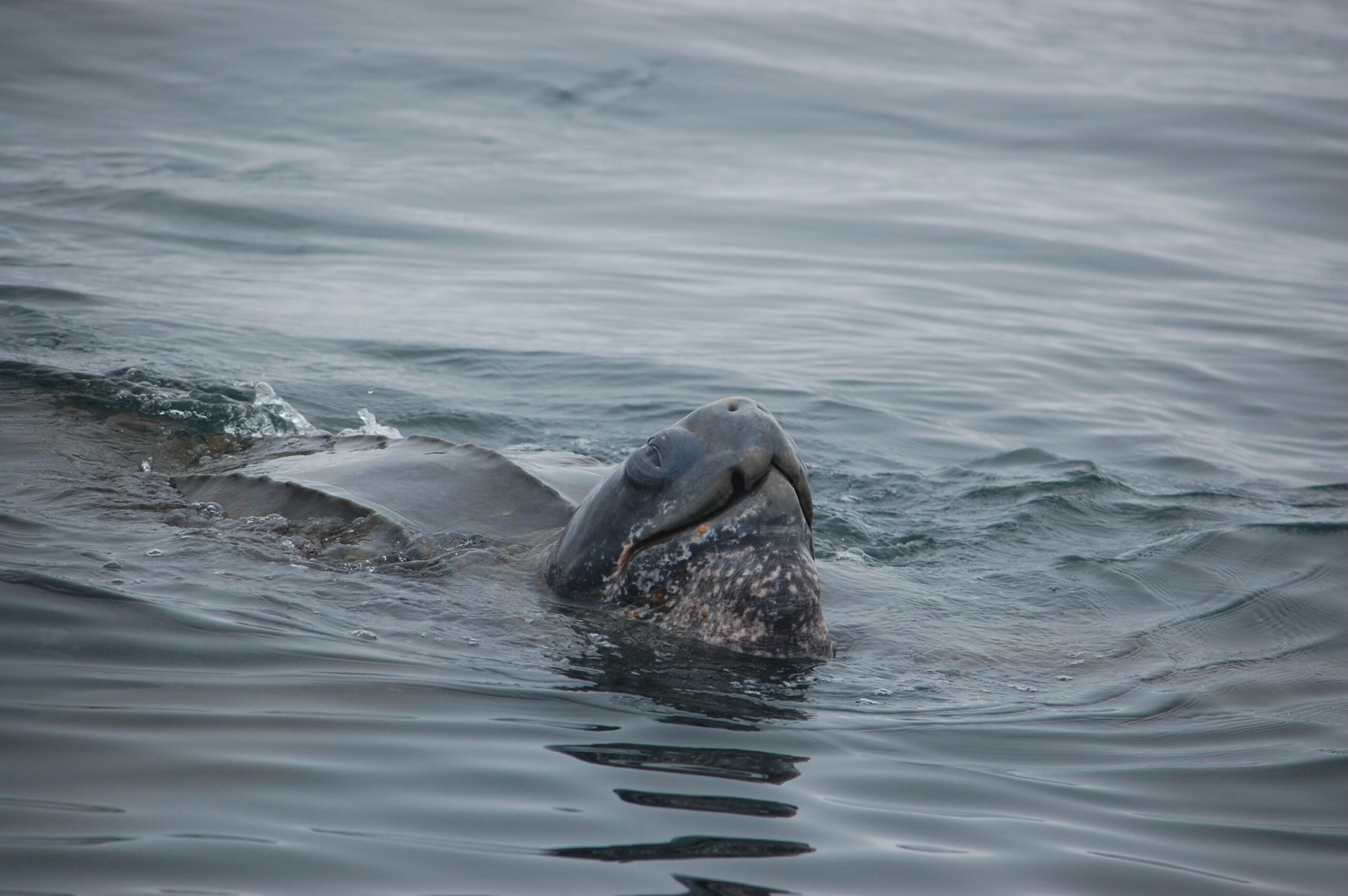For Immediate Release, July 8, 2021
| Contact: | Todd Steiner, Executive Director, 415-488-7652, tsteiner@seaturtles.org |
California Driftnet Buy-Back Program Protects Endangered Leatherback Sea Turtles
SACRAMENTO, Calif. — California’s budget will allocate $1.3 million to transition away from deadly gill-net fishing in state waters. The buy-back program comes as leatherback sea turtles begin to forage for jellyfish off the West Coast, swimming near the coast in summer and fall and migrating to warmer waters in winter. During these migrations, many leatherbacks are caught and killed by large mesh drift gillnets.
“This program should help put leatherbacks on the path to recovery,” said Todd Steiner, executive director of Turtle Island Restoration Network. “California’s coast and the leatherbacks that rely on it need us to start making their health and survival a priority before it’s too late.”
California passed the Driftnet Modernization and Bycatch Reduction Act in 2018 to phase out large mesh drift gillnets in state waters by awarding commercial fishermen cash for turning in their nets. Driftnets more than a mile long are left in the ocean overnight to catch swordfish and thresher sharks but also indiscriminately capture, injure, and kill other marine species including whales, dolphins, sea lions, sea turtles, fish, and sharks. Most of these animals, referred to as “bycatch,” are then discarded.
A federal bill vetoed by former President Trump would have extended similar protections to federal waters within five years and authorize the National Oceanic and Atmospheric Administration to help the commercial fishing industry transition to more sustainable gear types like deep-set buoy gear that uses a hook-and-buoy system. Deep-set buoy gear attracts swordfish with bait and alerts fishermen immediately when a bite is detected. Testing has shown that 94% of animals caught with deep-set buoys are swordfish, resulting in far less bycatch than drift gillnets.
The use of driftnets by a single fishery in California is responsible for 90% of the dolphins and porpoises killed along the West Coast and Alaska. At least six endangered, threatened, or protected species are harmed by driftnets off the California coast.
Large mesh drift gillnets are already banned in the U.S. territorial waters of the Atlantic Ocean and the Gulf of Mexico, as well as off the coasts of Washington, Oregon, Alaska and Hawaii. However, they remain legal in federal waters off the coast of California. The United States is also a member of international agreements that ban large-scale driftnets in international waters.
Turtle Island Restoration Network (TIRN) has led a coalition of concerned citizens and partner organizations for nearly 20 years to stop the devastating impact this fishery has on ocean animals. The nonprofit sued the federal government in 2001 to prohibit drift gillnet fishing in leatherback sea turtle foraging grounds each year, shutting down 250,000 square miles of the Pacific Ocean off California, Oregon, and Washington and reducing the number of leatherback deaths in the fishery from 112 between 1990 and 2001 to almost zero between 2001 and 2012.
TIRN has published numerous reports on the impacts the California driftnet fishery has on ocean animals and the economy, and worked with a coalition in 2018 to release gruesome undercover footage from driftnet fishing vessels showcasing the continued need to address the ongoing harm driftnets pose to wildlife. The video, which included footage of a bloodied, dead dolphin, garnered millions of views and spurred thousands to call for legislative action.
Turtle Island Restoration Network is a global ocean conservation nonprofit based in Olema, California whose mission is to inspire and mobilize people around the world to protect marine biodiversity and the oceans that sustain all life on Earth. Learn more at www.seaturtles.org.
###




